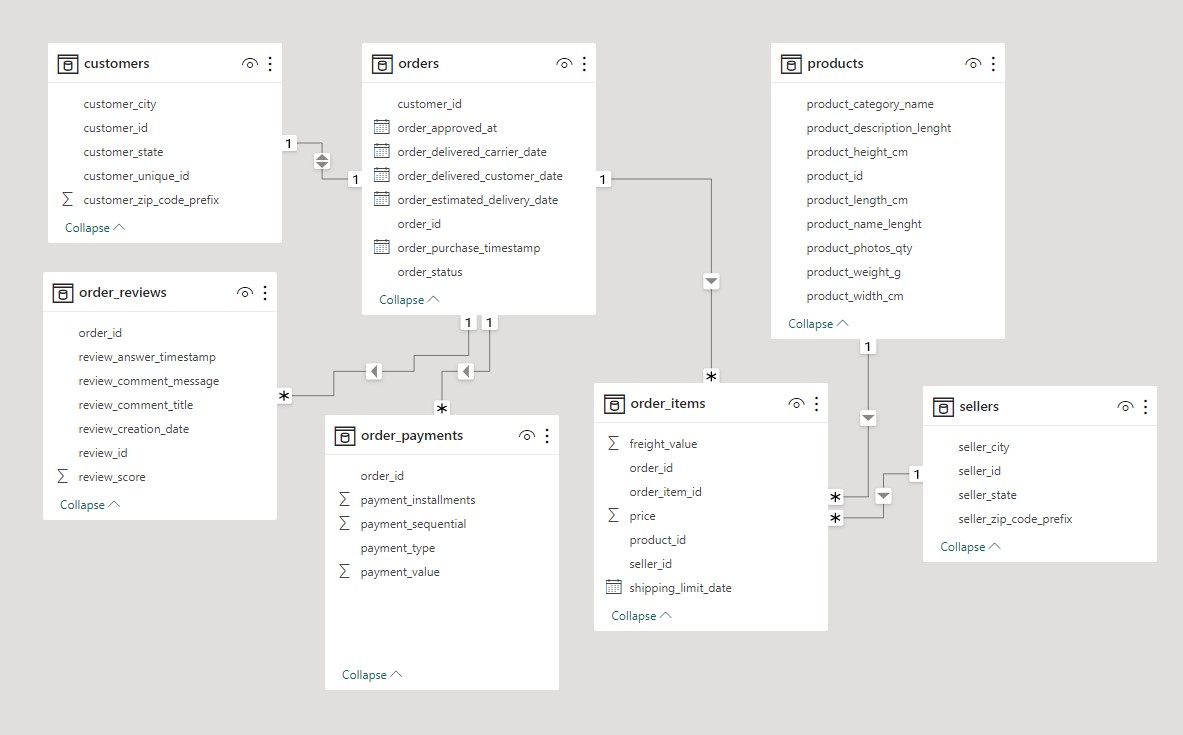Data modeling is a fundamental process in the field of database management and information systems. It involves creating a visual representation of an organization’s data and the relationships between different data elements. Think of it as building a blueprint for effective information management within a business or any data-driven system.
1. Understanding Data Modeling:
Data modeling is about structuring and organizing data in a way that is logical and efficient. It helps organizations understand their data, define business rules, and establish relationships between different data points. By creating a data model, businesses can ensure that their data is accurate, consistent, and accessible.
2. Types of Data Models:
There are several types of data models, each serving specific purposes:
Conceptual Data Model: This provides a high-level view of the entire database without detailing specific structures.
Logical Data Model: It defines the structure of the data elements and their relationships without considering how they will be implemented.
Physical Data Model: This model involves the actual implementation of the database on a chosen database management system (DBMS). It includes specific details like data types, indexes, and partitions.
3. Importance of Data Modeling:
Clarity and Communication: Data models serve as a common language between business stakeholders and IT professionals. They provide a clear visualization of the data requirements, fostering effective communication.
Data Integrity: Properly designed data models enforce data integrity constraints, ensuring that the data stored is accurate and consistent.
Efficiency: Well-designed data models lead to optimized database structures, improving query performance and reducing storage requirements.
Scalability: Scalable data models allow businesses to expand their databases without significant redesign, accommodating growth seamlessly.
4. Process of Data Modeling:
Requirement Gathering: Understanding the business requirements is the first step. This involves discussions with stakeholders to identify what data needs to be stored and how it will be used.
Conceptual Modeling: Creating a high-level conceptual model that outlines the major entities and their relationships. This model is often represented using Entity-Relationship diagrams.
Logical Modeling: Refining the conceptual model into a logical model. Here, entities are further detailed, and relationships are defined more precisely.
Physical Modeling: Designing the actual database schema based on the logical model. This includes defining tables, columns, data types, and relationships as per the chosen DBMS.
Implementation and Maintenance: The designed database is implemented on the chosen DBMS, and ongoing maintenance ensures that the data model adapts to changing business needs.
5. Tools and Technologies:
Various software tools facilitate the process of data modeling, allowing professionals to create, visualize, and manipulate data models efficiently. Examples include ERwin, IBM Data Architect, and Microsoft Visio.
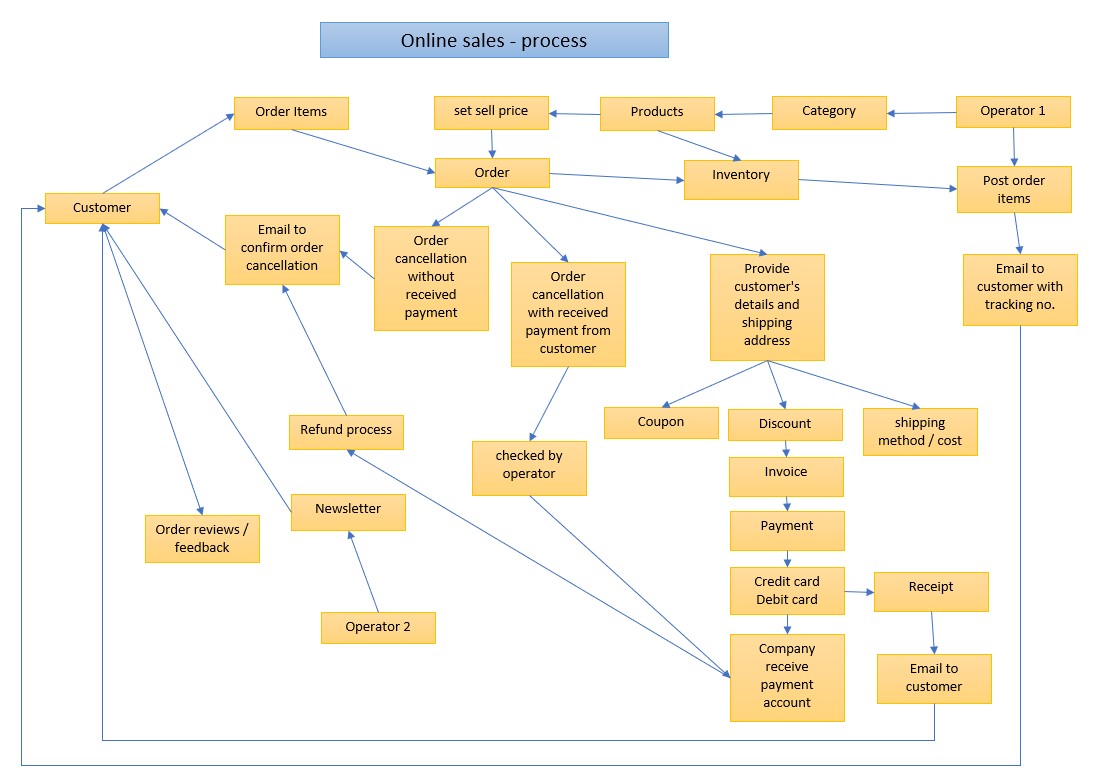
Cardinality in Data Modeling
Cardinality is a fundamental concept in data modeling that describes the relationship between tables or entities in a database. It defines the number of instances of one entity that can be associated with the number of instances of another entity. Cardinality is essential in determining how data is connected and how relationships between entities are established.
Types of Cardinality:
One-to-One (1:1) Cardinality: In a one-to-one relationship, each record in one entity is related to only one record in another entity, and vice versa. For example, consider a database where each employee has only one employee ID card, and each ID card belongs to only one employee.
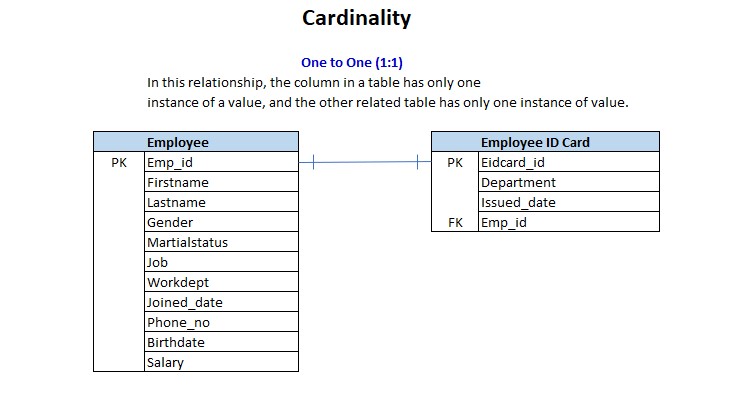
One-to-Many (1:N) Cardinality: In a one-to-many relationship, a single record in one entity can be related to multiple records in another entity. However, each record in the second entity can be associated with only one record in the first entity. For instance, one department can have multiple employees, but each employee belongs to only one department.
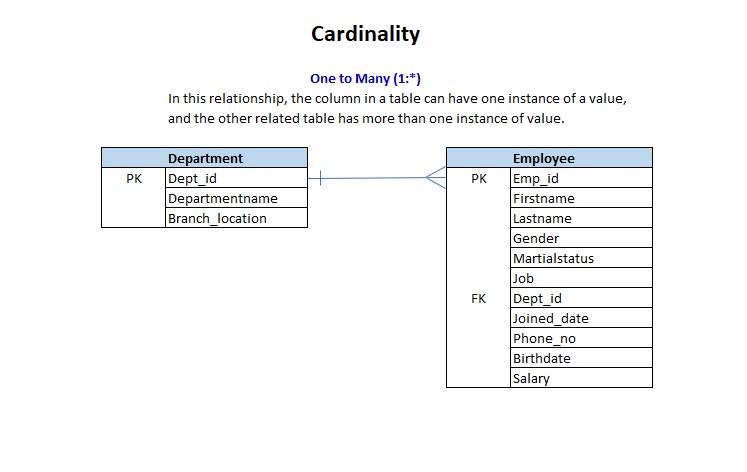
Many-to-One (N:1) Cardinality: Many-to-one cardinality is the reverse of one-to-many. It means that many records in one entity can be related to a single record in another entity. Think of it as multiple entities pointing to a single entity. An example could be multiple customers placing orders, and each order is associated with only one customer.
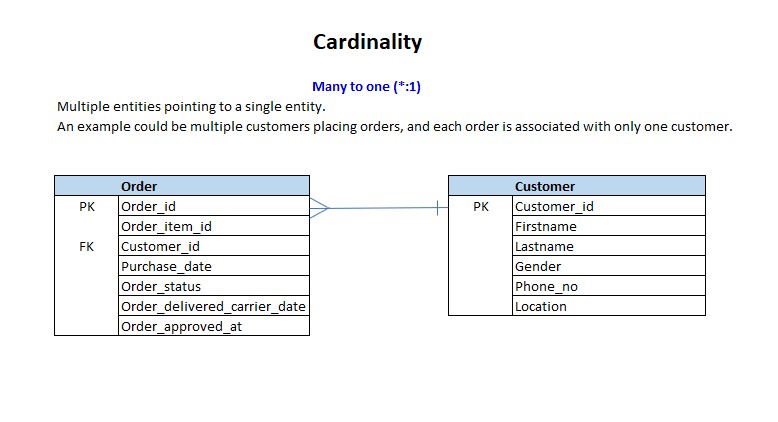
Many-to-Many (N:N) Cardinality: Many-to-many cardinality signifies that multiple records in one entity can be related to multiple records in another entity. This type of relationship often requires the introduction of a junction table, also known as an associative or linking table. For example, students and courses: each student can enroll in multiple courses, and each course can have multiple students.
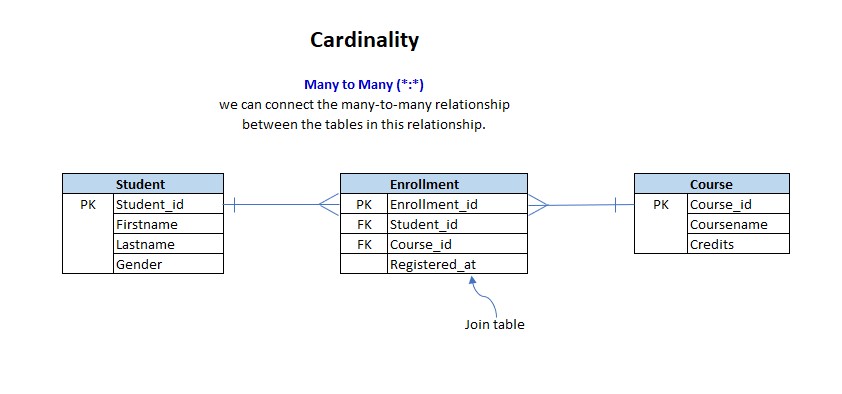
Importance of Cardinality in Data Modeling:
Database Design: Understanding cardinality is crucial for designing efficient databases. It helps in determining how tables should be structured and how foreign keys (links between tables) should be established.
Query Optimization: Knowledge of cardinality aids in optimizing database queries. By understanding how entities are related, developers can write queries that fetch data more effectively.
Data Integrity: Proper cardinality constraints ensure data integrity by preventing invalid relationships. They help in maintaining accurate and consistent data within the database.
Application Development: Developers use cardinality information when building applications to display related data appropriately. For instance, showing a customer’s multiple orders in an e-commerce application.
